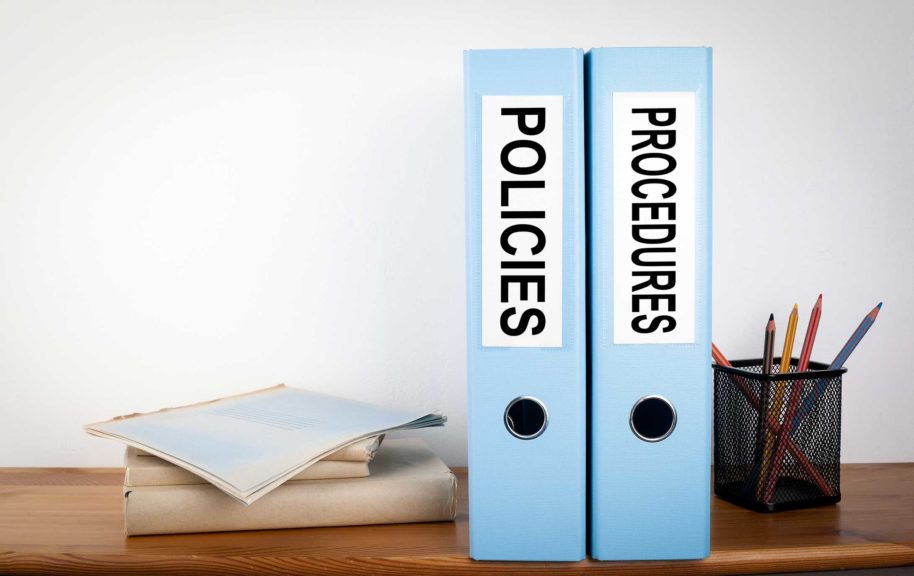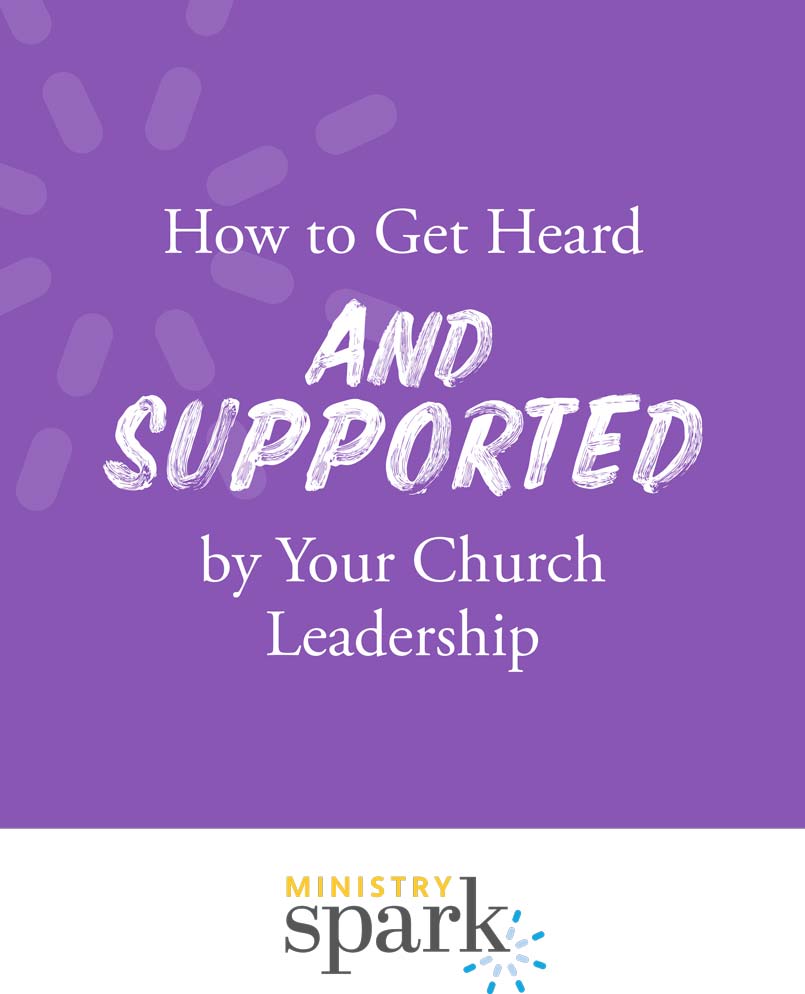If your church doesn’t have a handbook or child protection policy, it can feel like a daunting task to to create one. Where should you start? What information should you include?
In this post, we’ll walk you through the basics you need to include in your handbook policies. Take this one step at a time!
As you build your handbook, you will want to incorporate these 5 sections:
- Purpose & Statement of Faith
- General Policies
- Procedures
- Specific Guidelines by Age Level
- Forms
Start with the framework and build from there. Having something is always better than having nothing!
Within each of these sections, you may have various items depending on your church size, demographics, location, etc. We encourage you to think through some of the items below as you build your handbook.
There is no one right way to do this. It is just important that we are protecting our people the very best we can.
And remember that you don’t have to tackle all of these at once. Start with the framework and build from there. Having something is always better than having nothing!
Handbook Purpose & Statement of Faith

You’ll likely create this section last, as it is built on your policies, but it is important to think about it first. This is so that as you build, you know where you are heading. And, it’s a great section to include at the beginning of your handbook so people know what to expect.
Purpose
It’s important to clearly state your purpose for this handbook. What are your goals in creating it?
State what you are trying to accomplish with your policies. For example, if it is to protect the attendees of your church—be sure to list those things. It could be to protect people during a health-related crisis like we are experiencing with COVID-19.
Legal Advice/Laws
Refer to the legal advice and reasoning behind the policies you have created. Include the state and local laws or regulations you’ve pulled from when creating your document.
Mission
Include your church’s statement of faith and/or mission statement to remind people up-front what you are all about. If you don’t have a mission or vision statement yet, this article will help!
Handbook General Policies
In this section you will want to explain the overarching policies you have created and the why behind the policies you’ve created. It should be a more elaborate version of the purpose you’ve stated up front. If you have various goals listed in the purpose, then be sure to include explanations of each of those here.
For example, if a big part of your handbook is about wellness guidelines and policies during the time of re-entry from COVID-19, express how protecting the most vulnerable and complying with laws is important in this time.
Handbook Procedures

In your procedures section, you’ll include very practical explanations and steps for getting to your general policies. Here are some steps you can take:
Define
Clearly define what you are talking about by including definitions of words or phrases. Some important ones are child abuse, sexual abuse, assault, etc.
Recognizing and Reporting
What are the steps someone should take when recognizing and reporting on important issues like abuse, neglect, assault, etc. Have policies for when and how someone should report, with clear steps for doing it. Give people an outline for what is mandatory versus what is suggested.
For this section in particular, we suggest that you be sure to check with your state and local laws—as well as get any legal advice that you can.
Church Representation
It’s important here to list who can make statements on your church’s behalf. An example of this would be speaking to the media as a representative of the church. It is important to lay this out so that people know who would be responsible in certain situations.
Counseling and Other Services
Within this section, be sure to list any services you have available and the policies for accessing them. Who can provide counseling care at your church? Who can get that care for free vs. who would need to pay? Are there specific ways you help families in need?
Security
If you have a security team and plan, this would be the place to refer to it. Do you have restricted hours at your church? Are there cameras people should be aware of? What is the plan for an emergency? Who is the contact for the team?
Here is a great place to include any policies related to security.
Outside Groups Using Your Grounds/Facilities
This is the section where you would include any rules or costs for outside groups using your church. This could be for rentable spaces in your church, or even for weddings. The costs or rules may be different for church members. Be sure to also include a section with that information.
Workers and Volunteers
It’s important that you have policies for both hiring staff and utilizing volunteers. You can include the selection requirements, job descriptions, and contacts for different areas of your ministry. This section should include information for:
- Applications, references, background checks
- Paid staff
- Approved volunteers and substitutes
- Staff and volunteer training
Wellness Policy
What is your church wellness policy? When do you recommend people stay home or keep their kids at home? Think through these things and even look to the CDC for recommendations. You might decide to include this here, or even to include it for different age levels below.
Either section is fine, but you definitely what to have guidelines clearly laid out somewhere. It makes things a lot easier when you have guidelines to reference when people have questions or try to drop off a baby who has a fever.
Open Door Policies
Does your church have an open-door policy for when there is less than a certain number of adults in a room? Or even for the number of females and males in a room? This would be a good place to include that information. This policy may also vary by age level!
Cleaning Policies
Cleaning is really important in this day and age—we all know it. What are your procedures and policies for cleaning? What needs to happen between services? And what does your congregation need to know?
During this time, it might also be great to include social distancing policing and what that looks like for your church. How do you eliminate gathering places so that people are being safe?
Disclaimers & Precautions
In this section you will want to include any and all disclaimers that you can think of. What is your church not responsible for if something is missing from this document? What if there is a theft on your premises or what if someone falls? Think through this—it’s important!
It is also good to talk to your insurance agency to get a good idea of what you are and are not liable for, and what precautions you can take.
Handbook Guidelines by Age Level or Ministry

In this section of your handbook, you’ll want to think through your different ministry areas and have policies around them. For example, your children’s ministry will likely need more guidelines than your senior adult ministry.
It’s important to include those details here, broken down by age level or ministry.
Here are some suggestions of things you should look at:
- List the leader/student ratio requirements per age level or ministry group.
- Think through your various security policies and how they might look different within particular segments of your congregation.
- Check-in process
- Room access
- Reference open-door policy
- Emergency protocols
- What are your policies on male/female volunteers working together or with kids of the same or different sex?
- List the specific wellness policies for the different age levels. The nursery policy might look a little different than the policy for elementary students.
- Reference the importance of classroom roster policies, so that you know who’s been where and with whom. This will help you in cases if children or families get sick—this is especially important now. You can notify those who were in the classroom with them.
- List the restroom policies for these groups. How many adults should go with children? What are the best practices for potty time?
- Have a reference for when parents should be contacted. For example, with wellness issues, or even if there’s been a problem with a volunteer or student. Communicating is important when it comes to building trust.
- Always include a section on appropriate physical touch. This is key to keeping children, youth, and adults protected and comfortable at your church.
- What are your classroom transition policies for children? What do parents need to know about where their children will be and when?
- Have a section about what to do if you are short-staffed—this links back to leader/student ratio and the importance of keeping everyone safe.
- What are your ride policies (specifically for youth)? Be sure to include those here.
- Also include all overnight policies—especially for lock-ins. List who can be where and what’s required of them. This is so important for the safety and protection of our students!
Handbook Forms
At first, you might only have a few forms. That’s okay! Include what you have and build from there. Here are some ideas of forms to include in your handbook.
- Volunteering Applications
- Weekly/Monthly Volunteers
- One-time Volunteer
- Background Check Form
- Reference Check Form
- Parent/Guardian Consent Form
- Liability Waiver
- Reporting Abuse Form
Note that there are other forms you might want to include, like a social media release form, etc. Include what works for your church’s needs!
You Can Do This!
As you build your handbook—start small and go from there. You don’t need to have everything figured out when you begin. Pull different leaders in to help you with different sections as well.
You can do this.

How to Get Heard and Supported by Your Church Leadership

How to Get Heard and Supported by Your Church Leadership








